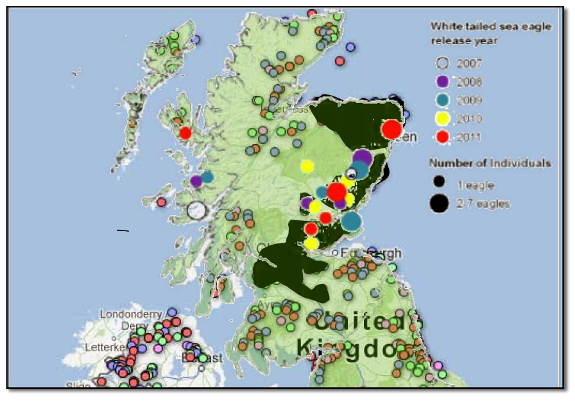I few days back I was pressing Harry Huyton, the RSPB's climate change bod, about the society's weak opposition to wind farms. His position is that the RSPB opposes windfarms when inappropriately sited. I pointed out that windfarms tend to be in upland areas, where raptors - particularly prone to wind turbine collisions - tend to be found in large numbers.
It also occurred to me that the society has been trying to reintroduce sea eagles in the east of Scotland, an area in which windfarm development is frantic and so I thought I would try to work out just how much overlap there is between the two. The RSPB's sea eagle newsletter has a useful map of sightings and maps of windfarm developments are also easy to get one's hands on.
Here are the results. I've fairly crudely superimposed the two maps and shaded out the east-coast wind farms in black, leaving the large coloured dots that represent the sea eagle sightings (ignore the small dots - that's just more windfarms).
 The size of the dots for the eagles represents the number sighted rather than a range, but given that sea eagles have a range of up to 70 km, it's clear that the RSPB is going to have to oppose all east-coast windfarm developments north of the Firth of Forth and South of Aberdeen.
The size of the dots for the eagles represents the number sighted rather than a range, but given that sea eagles have a range of up to 70 km, it's clear that the RSPB is going to have to oppose all east-coast windfarm developments north of the Firth of Forth and South of Aberdeen.
I'll ask Harry if he'd like to comment.